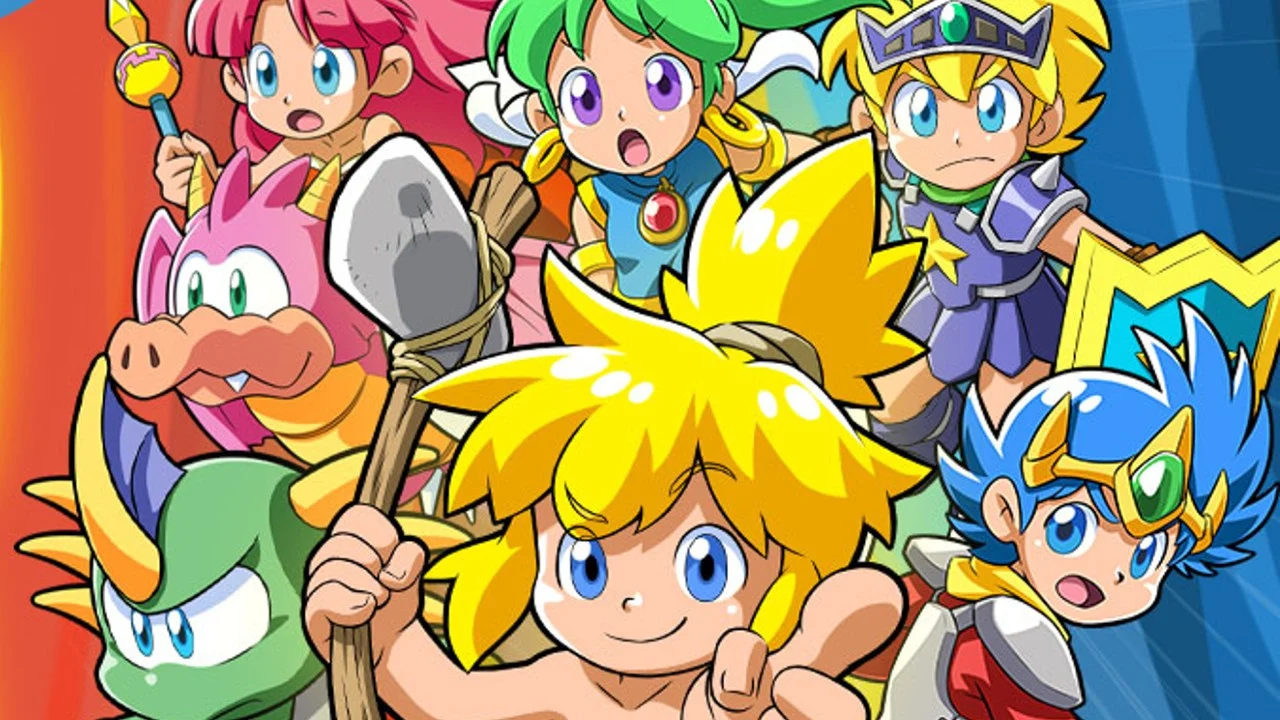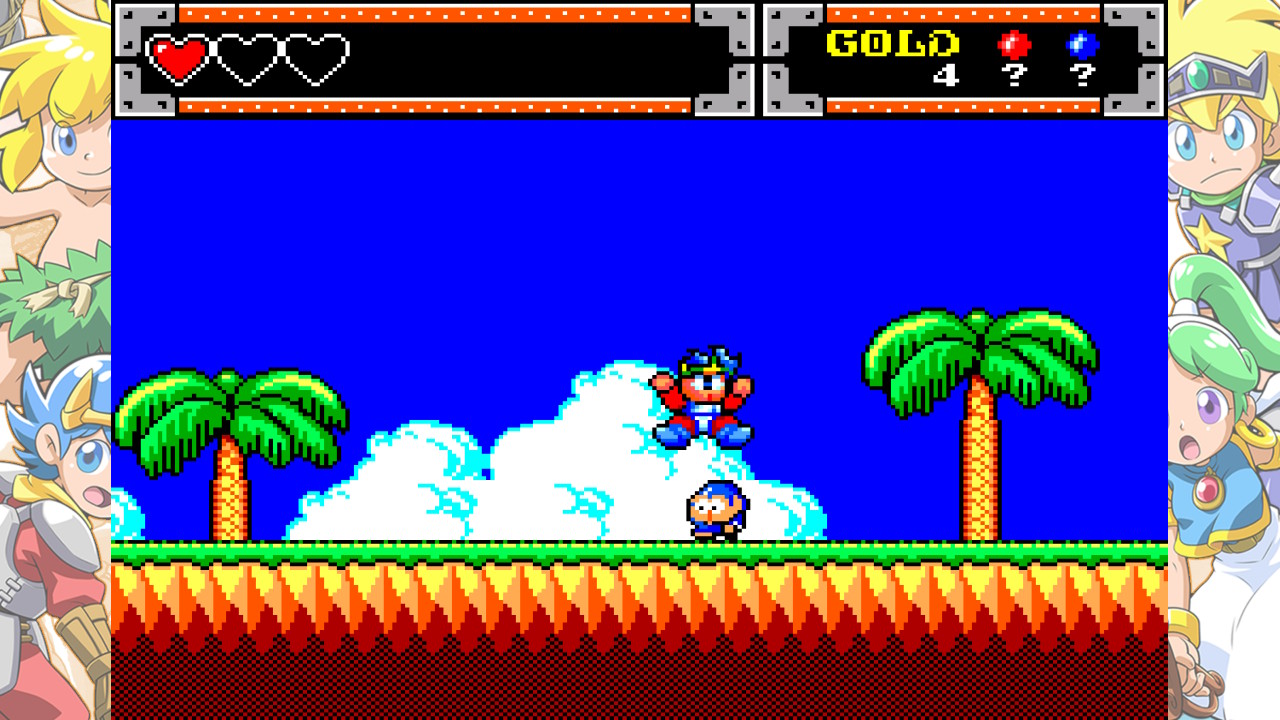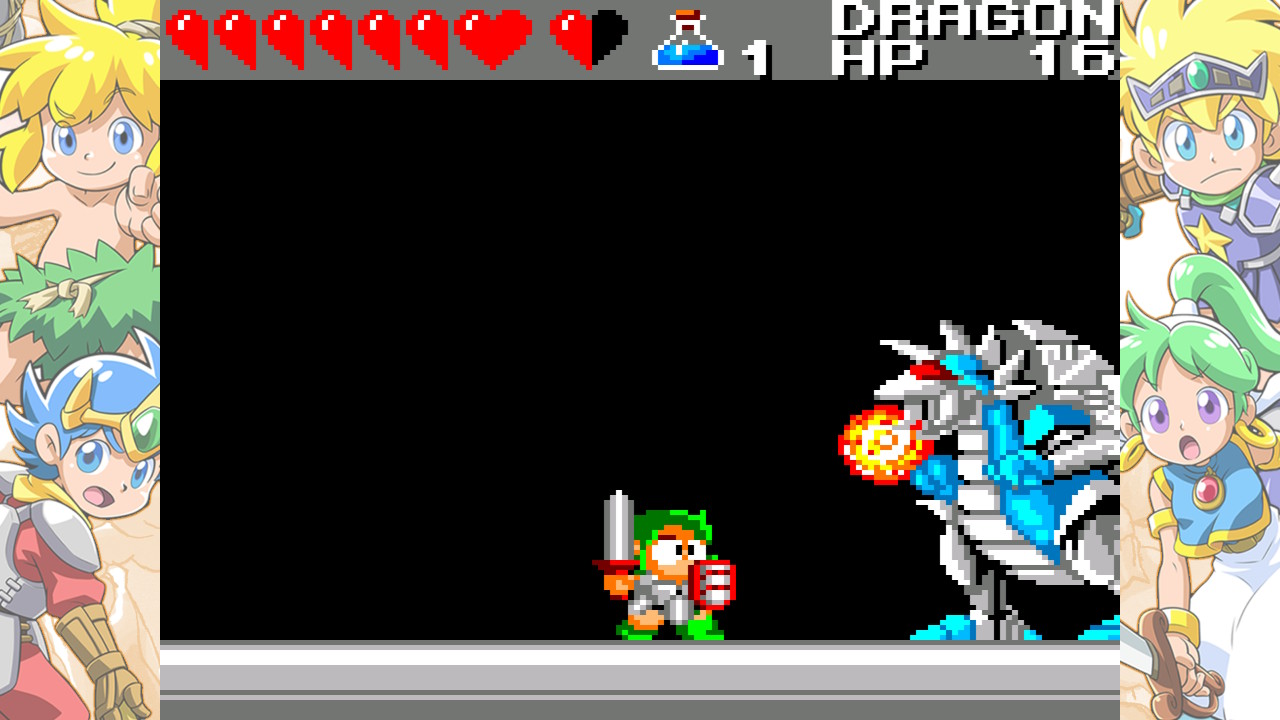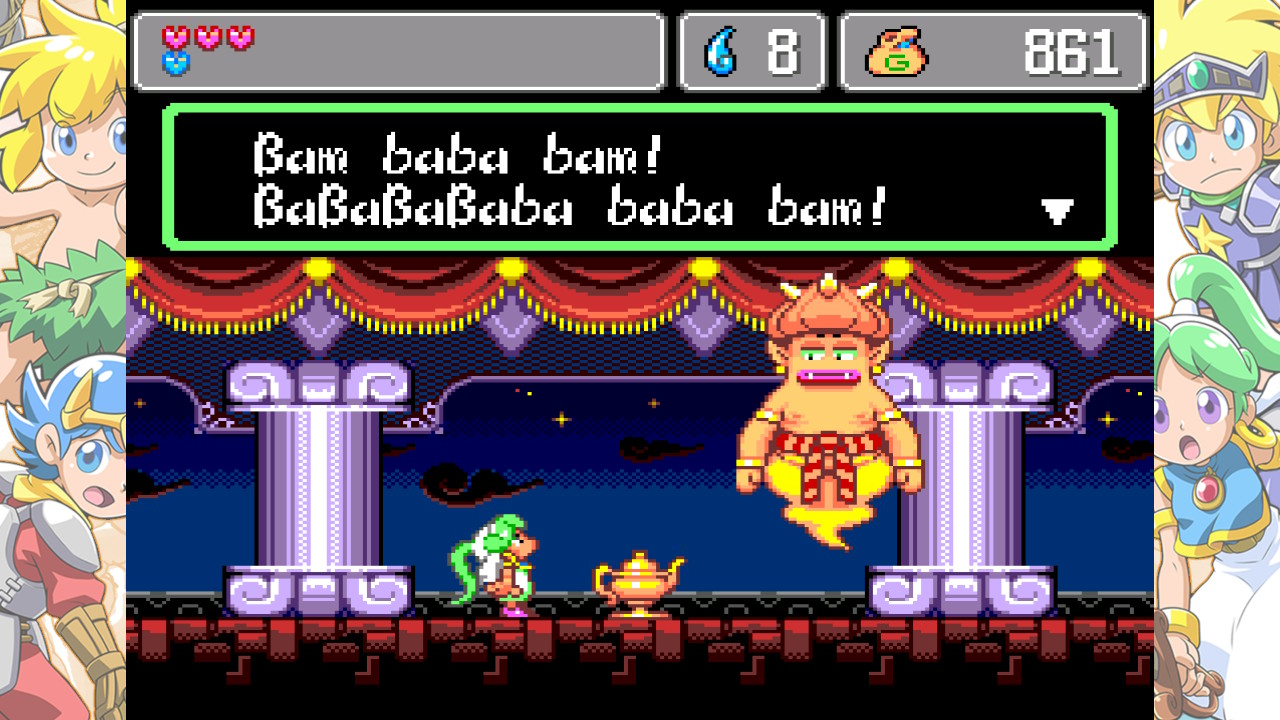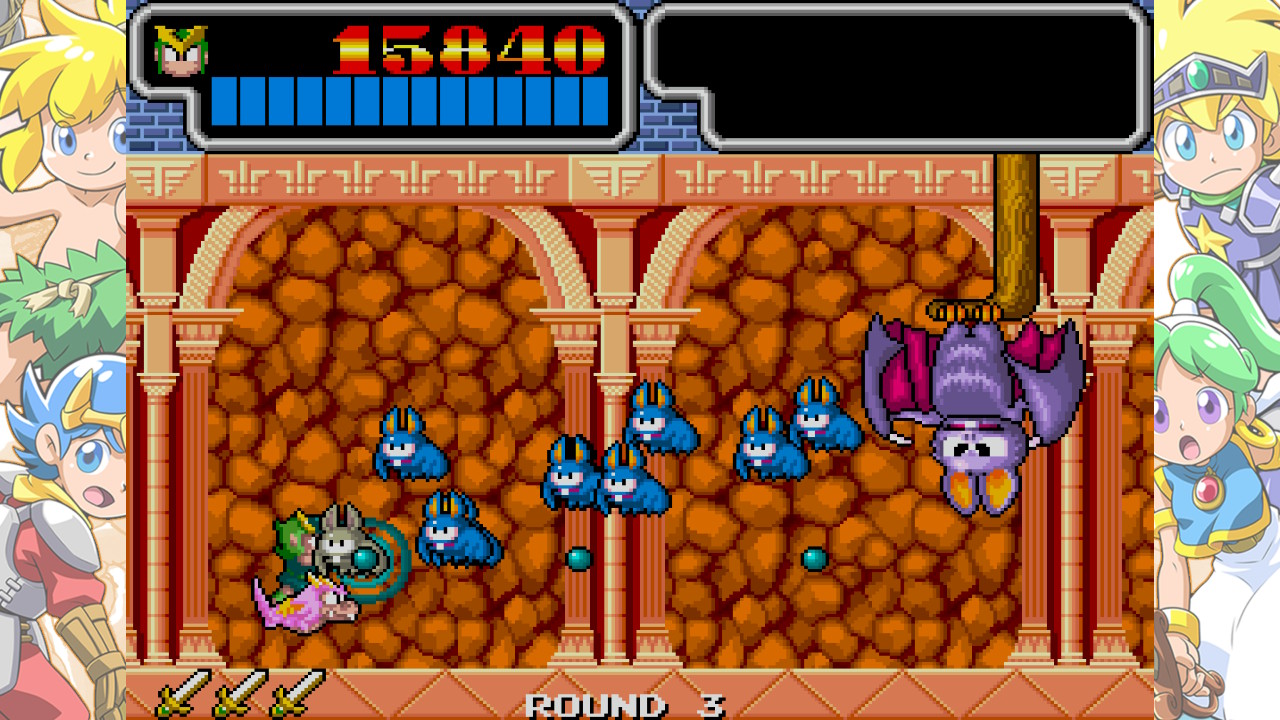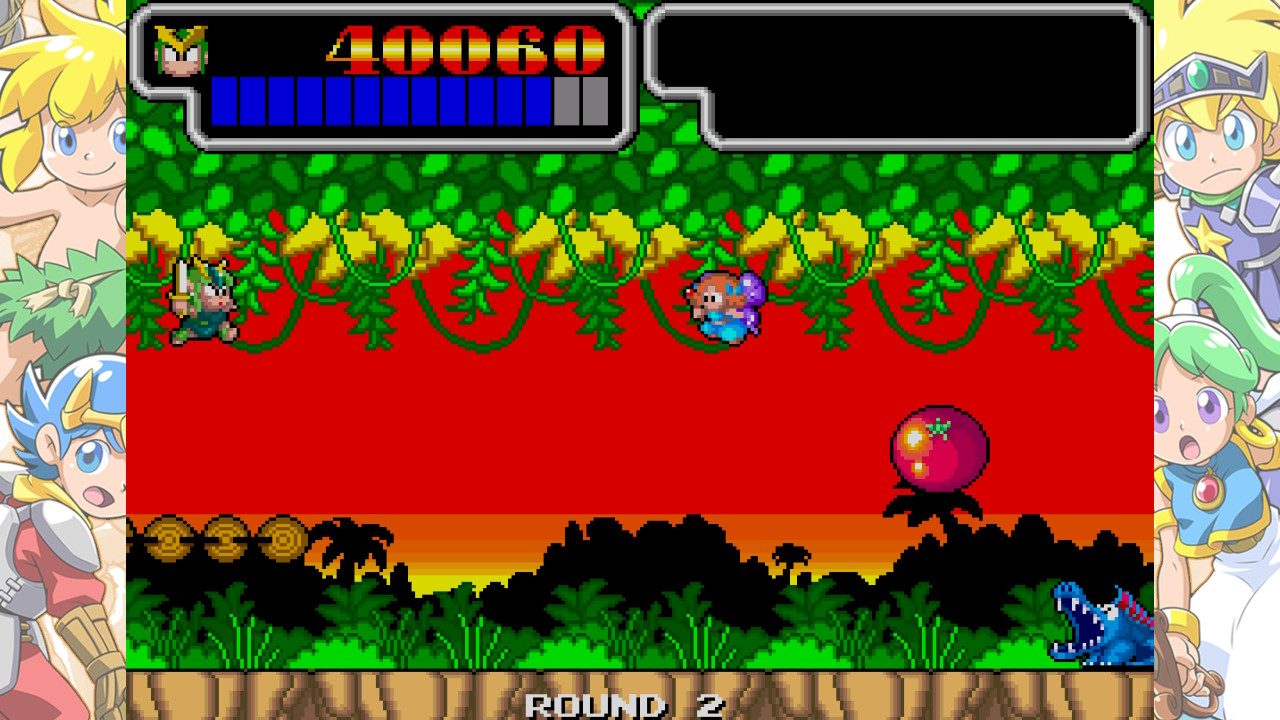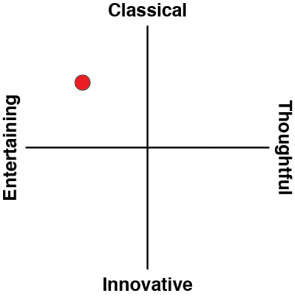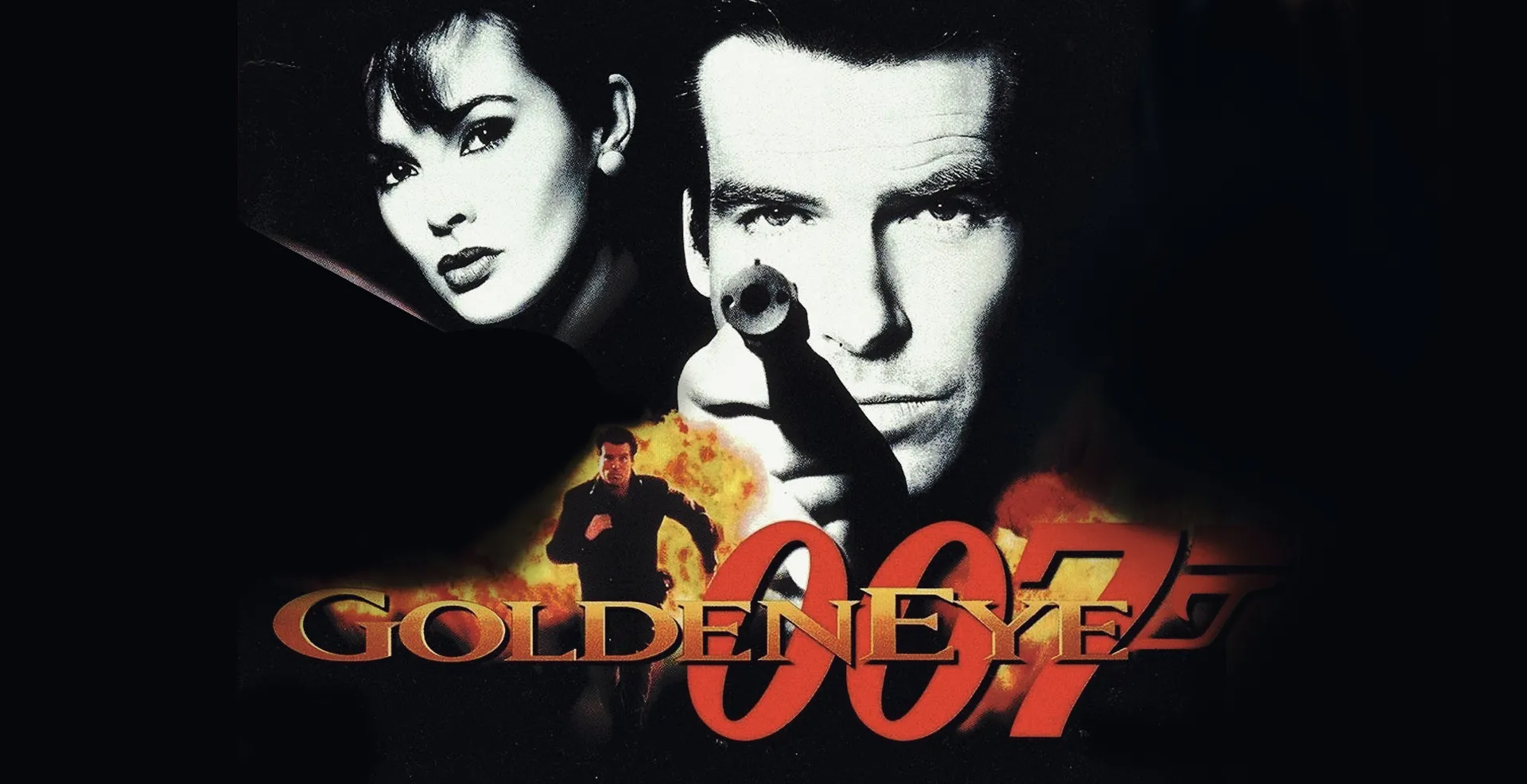Wonder Boy is one of those classic gaming icons that you’ve probably encountered at some point in your gaming life, whether it’s the classic arcade game or the more recent remakes of titles such as Wonder Boy III: The Dragon’s Trap.
I say “recent”, and then I look it up and realise that Lizardcube’s remake came out more than five years ago. Time flies when you’re having retro fun, it seems.
Leaving my ancient bones aside, there’s been a pretty large number of Wonder Boy games since he made his arcade debut back in 1986. The Wonder Boy Anniversary Collection promises 21 games in its package, but it’s not as though there’s been 21 separate Wonder Boy games. You might just stretch there if you included the similar-but-not-identical Adventure Island games, but they’re not here either. What you instead get are six games to play; Wonder Boy, Wonder Boy In Monster Land, Wonder Boy III: Monster Lair, Monster World II, Monster World III and Monster World IV. So how do you get from six to twenty-one?
You throw in the console variants as well as the arcade models for these games – which means, for example, that you get Wonder Boy in its System 1, SG-1000, Sega Mark II, Master System, Japanese Game Gear and US/World “Revenge Of Drancon” variants. For some later titles, the only differences are whether you’re getting the English language or Japanese language variants, although it wasn’t unknown for minor difficulty or visual tweaks to be made to some converted titles back in the day.
The inclusion of variants is something I very much approve of. One factor that has annoyed me a little with some recent retro collections has been ignoring the structural differences between versions of the same game. While it may not have huge implications if all you want is to play arcade Wonder Boy, it’s historically significant to look at how each platform handled different titles given varying processing power, and in the case of the Game Gear, screen size.
That being said, of course I can’t help but notice what’s not here. There’s no emulation of the many 8-bit home computer ports of Wonder Boy for a start. If you’re going to head down the rabbit hole of comparing versions, why not let me see how the ZX Spectrum or Commodore 64 handled them? Even keeping it on Japanese consoles, where’s the weird Bikkuri Man World variant for the PC Engine?
Equally, if you were hanging out for the more recent remakes of Dragon’s Trap or Monster World IV, they’re not present either. I guess they are still somewhat commercially viable products in their own right, but it would have been nice to see them here, to make for a more complete collection.
It certainly doesn’t hurt that there are some cracking games here covering a variety of genres. OG Wonder Boy is still a great time if you want a quick arcade blast, while Monster Land, Monster World II (AKA Dragon’s Trap) and Monster World IV are great RPG-lite platform adventures. The Megadrive/Genesis Monster World III (AKA Wonder Boy in Monster World) isn’t quite as good, and Monster Lair is more of an interesting experiment in hybrid platform-shooter mechanics than a truly good Wonder Boy game. At least they tried something different there, I guess.
While you do get many of the current generation emulation staples such as save states, screen filters and immediate rewinds to play with, the actual emulation interface is rather bare-bones, and in some respects lacking. I’ve spotted more than one typo in the accompanying text, and actual instructions aren’t that evident in-game. One unusual step that the system takes is to assign extra buttons for specific functions that were handled with just two buttons on the original hardware. That’s fine if you want a simpler life, but it’s on by default, which threw me badly as I was trying to work out why I couldn’t run in Wonder Boy for the Master System. It’s because it was now mapped to the R shoulder button, but would only work in the classic way – holding down the fire button – if I changed mapping schemes.
There’s a selection of scanned material including manuals to flick through in the game’s gallery, but it’s presented in a very simple menu system ripped straight out of DOS. Have I been spoilt by the superb presentation in titles such as Atari 50? You bet I have, but when a title like that comes along and essentially redefines how you present that kind of material, everyone else should work to at least keep up. The Wonder Boy Collection doesn’t do that, but the reason is rather more convoluted than you might think.
The issue here – and it’s one that affects the value proposition of the entire package – is that while this is a new-to-download-from-the-Switch-eShop collection, it’s far from a minty fresh collection in its own right. Go searching for Wonder Boy in the eShop and you’ll find various titles that include it, including a cheaper Wonder Boy Collection. That collection cuts out Wonder Boy III (Monster Lair) and Monster World II (Dragon’s Trap), but it’s otherwise the same package. It’s still available to buy too, which is a little odd in market where often new compilations get released while older ones are withdrawn from sale.
The full Anniversary Collection was also available as a Strictly Limited Games physical release with all titles included, and at the time of its release less than a year ago, it was the only way you could get all these games in the one set.
So if you bought the Strictly Limited Games version thinking you’d be getting something rare and unique that others couldn’t, you’re now proven wrong. This is why the collection doesn’t feel quite as fresh and new as it might, because it’s actually not really a “new” collection at all. It’s just available to a wider audience now.
There’s an argument in there about the whole “limited” physical games market – and I for one welcome the idea that more people should play more games, so wider availability feels like a good approach to me – but what is more galling is that despite being the exact same code base, if you have the regular “collection” there’s no way to upgrade to the “anniversary collection” without buying the whole package all over again. You’re basically paying full whack for just two games in that scenario, and that can’t help but feel a little money-grubbing on the developer’s part, especially for titles that have seen a lot of releases over the years.
From where I’m typing this, I could reach across on a shelf to the original Master System Wonder Boy and all the Megadrive versions for a start, but they’ve also seen life on the Wii Virtual Shop and in other older collections as well if you’re not as pedantic about original hardware as I am. The separation of price from value is a tricky one, though. Could you get the full $75 worth of value out of these actual games leaving the developer’s selling games? For sure you could, because they mostly stand up very well. Wonder Boy is a bit of a coin gobbler, but that doesn’t matter if the coins are free.
Monster Land and Dragon’s Trap remain two of my favourite action RPG platform games ever – and both predate the whole “Metroidvania” trend by years in terms of having evolving gameplay and repeated environments, especially for Dragon’s Trap. Monster World IV was for so long a bit of a hidden Japanese treasure, and while its remake is prettier, the original is still a great fun time.
Still, I’d suggest you check your games shelf and work out which of these titles you really want and need. I can’t quite see the point in buying the regular collection now that this Anniversary Collection is more widely available, but it’s equally not going to thrill you quite as much unless you’ve got a particular passion for games that you already own.
